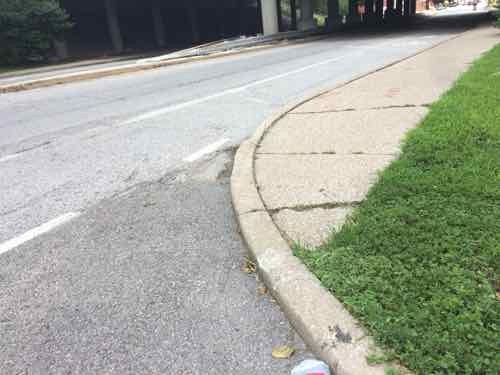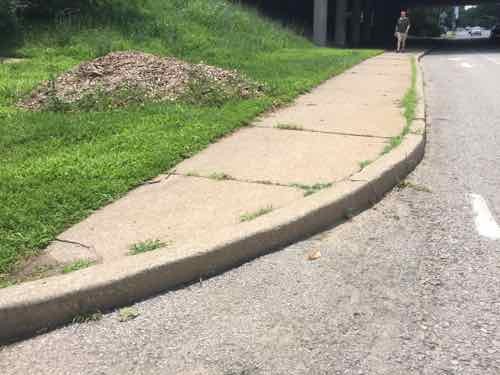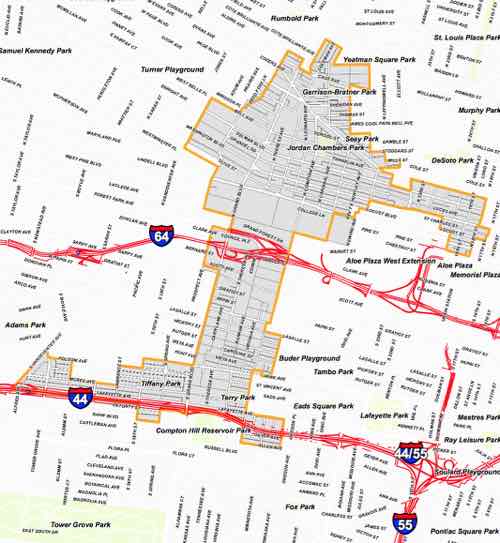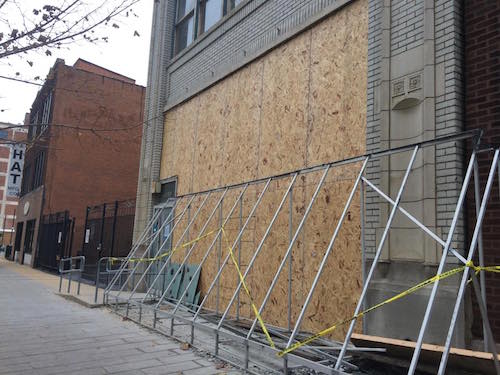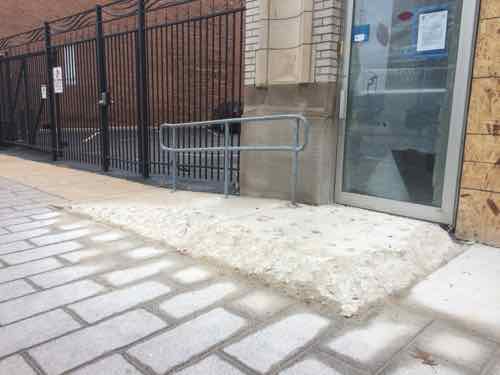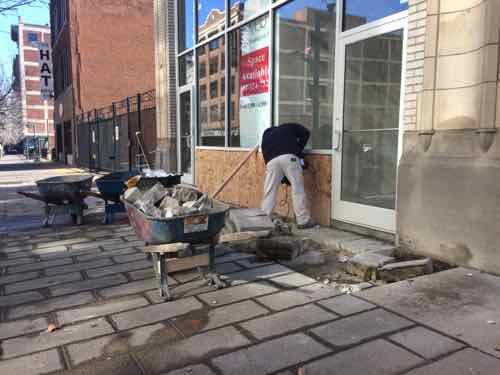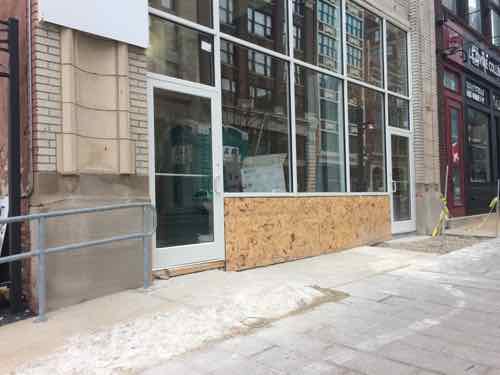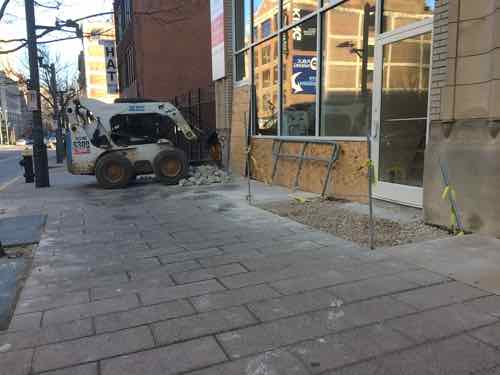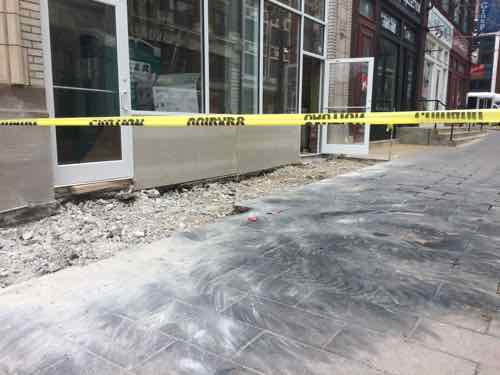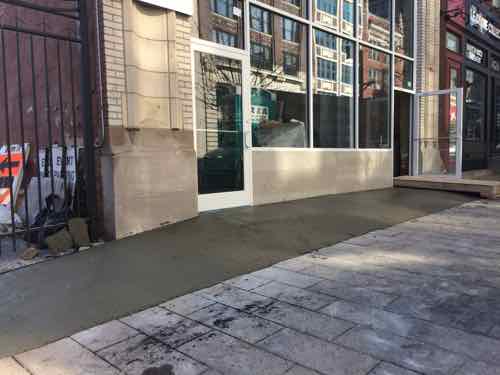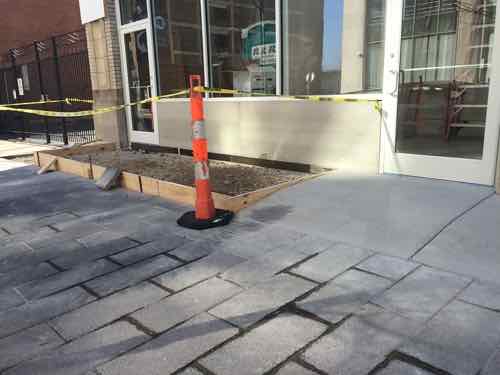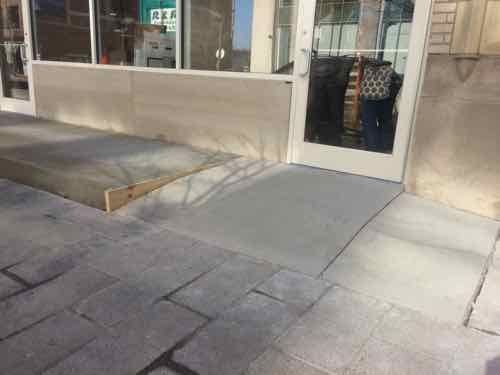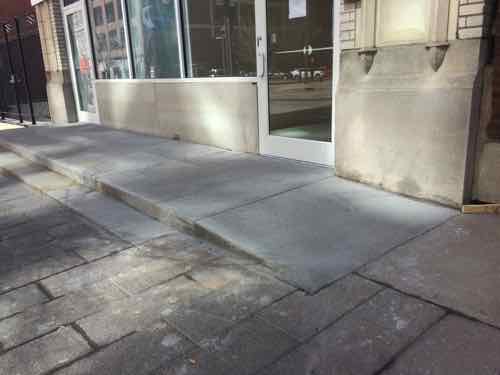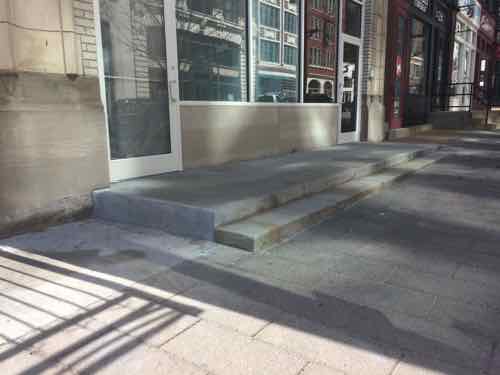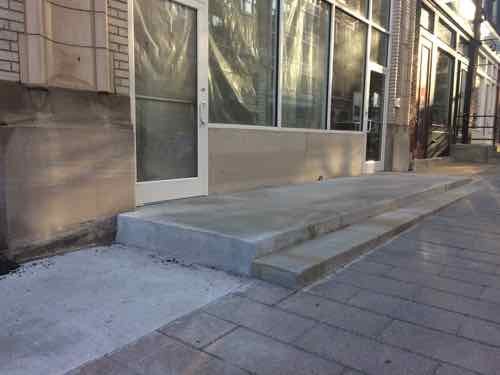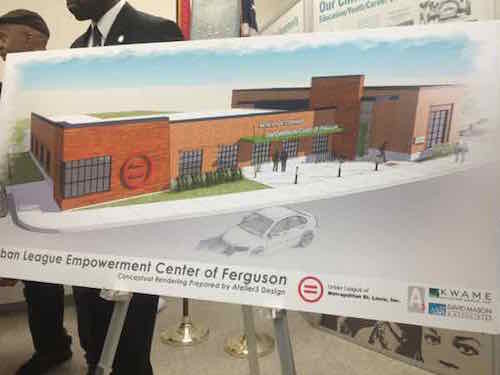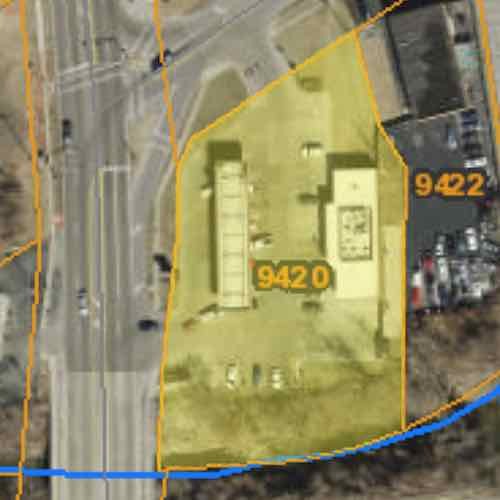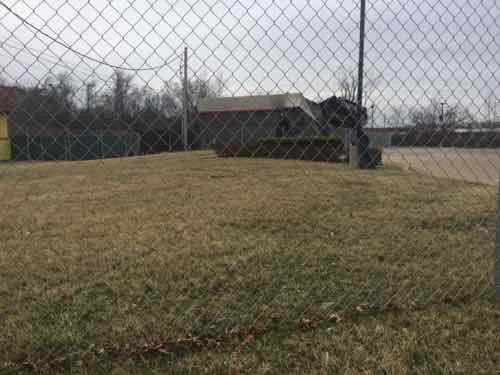Yellow Curb Isn’t Visible Enough To Keep Motorists From Parking In Bus Stops
One of my pet peeves is blocked bus stops, people thinking they’re entitled to park in them. To be fair, many drivers who do so may just be oblivious to the fact that buses need to pull up next to the curb so some of us can board/deboard. The response of some is “call the police” or “tow them away.” Yes, enforcement is part of the solution — but the St. Louis Police really have more important things to do. I don’t think Metro’s Police have jurisdiction on city streets.
Besides, the police can be just as guilty.
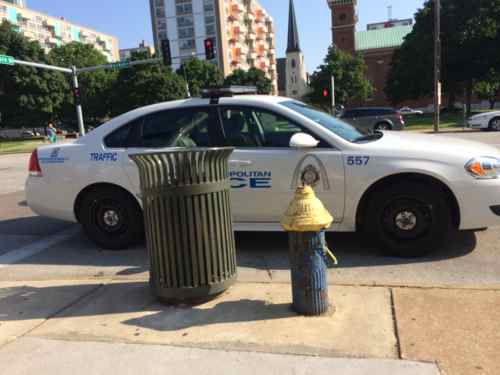
When you’re on the bus and need to get off at a blocked stop you can’t expect it to wait a couple of hours for a tow truck to remove the offending car, or when you need to get on the bus you don’t have time for enforcement to work. Ticketing the car still doesn’t get you on the bus.
What’s needed at some bus stops is highly visible markings so the oblivious drivers see they shouldn’t park there. Those who don’t care will potentially be more embarrassed parking in a visible bus stop than at a yellow curb. It doesn’t need to be complicated, just out of the ordinary.
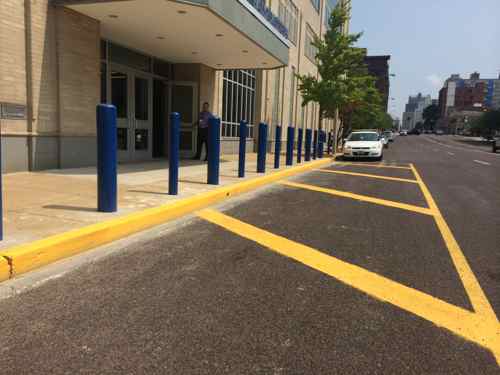
I’ve said all this before, so why bring it up again? Last Tuesday morning my husband and I visited the St. Louis Zoo, we were there for four hours — great time. I returned downtown the way I arrived, via public transit in my wheelchair. My husband drove our car, going directly to work. Leaving the Zoo’s North entrance I saw a problem as soon as I started across the street to the bus stop.
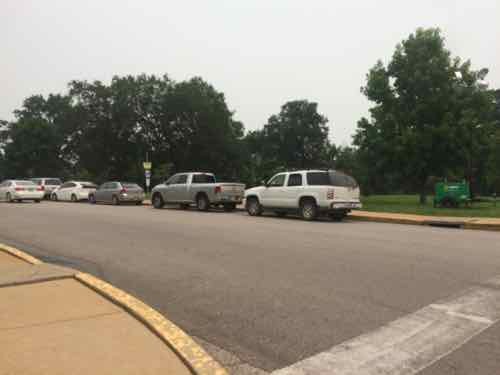
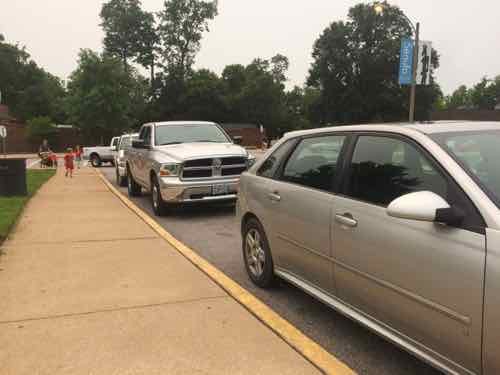
I went down to the corner to wave at the bus as it approached. It turned the corner and stopped in the street since it couldn’t get to the curb. All traffic was now stopped. I rolled in the street to reach the bus. After I paid the fare the ramp was folded back into the bus — the #3 Forest Park Trolley. I was inconvenienced, the other passengers were inconvenienced, other motorists were inconvenienced, the bus was delayed so more people were inconvenienced.
My goal is compliance, to ensure people don’t park in the bus stop. Sure, increased enforcement of tickets, booting, & towing might also keep it clear. But at what cost? First the person(s) that would be assigned to increased enforcement wouldn’t be able to serve the public elsewhere in the city or park. Ticketing, booting, & towing also isn’t free — and it just server to anger motorists. Yes, they parked at a yellow curb. I suspect many didn’t notice, or didn’t see any harm.
If there is paint on the pavement though, the oblivious excuse goes out the window. Adding the words “NO PARKING”, “BUS STOP, and/or “TOW AWAY ZONE” would convey the message to the driver that parking here isn’t a good idea.
The stop above is served by the #90 (Hampton) and #3 (Forest Park Trolley)
The Metro #3 Forest Park Trolley is a partnership between Forest Park Forever, Bi-State Development Agency/Metro, Missouri History Museum, Saint Louis Art Museum, Saint Louis Science Center, Saint Louis Zoo, and the City of St. Louis. (Forest Park Forever)
This trolley bus operates May through September, largely to mitigate the summer problem of traffic congestion within the park.
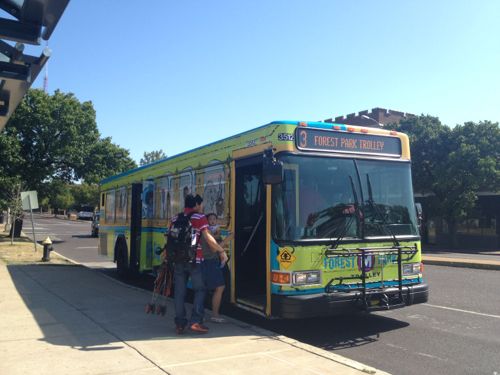
I’d like to see these seven partners take action so the bus can reliably be used by everyone. On Twitter I offered to ride the trolley with them so they can see which stops are problematic. I suggested the stops be painted solid so they’re not only visible to motorists but to visitors. The stops could become part of the marketing effort.
I emailed Forest Park Forever President & Executive Director Lesley Hoffarth, who replied, and said they’re working on new striping for the park now, this issue will be taken into consideration. I’m not optimistic it’ll be solved. The new striping work should be done before Fall, I’ll keep trying to influence the work before it’s done.
— Steve Patterson
